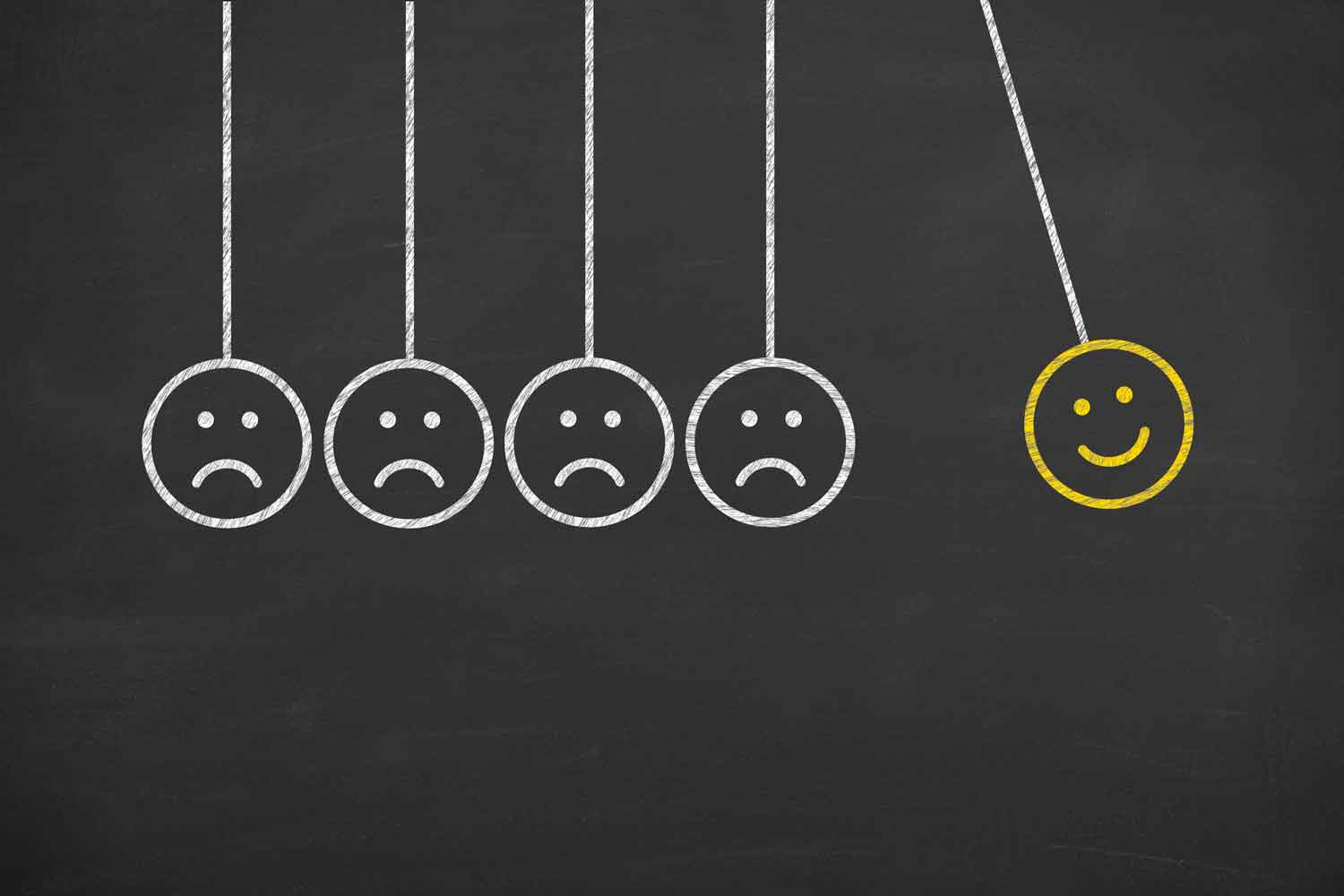
Despite all the meditation lunches, fun runs, trigger warnings and caffeinated chocolates, Australians aren’t getting any happier. In fact, we’ve just dropped out of the top 10 of happiest countries for the first time, according to the 2019 World Happiness Report. New Zealand are now ahead of us on a list topped by Finland, Denmark, Norway and Iceland. We’re an increasingly bummed-out people, and to make matters worse,“we live in a culture that is just obsessed with happiness,” says Darrin McMahon, author of Happiness: A History.
And we should be obsessed with it: a positive outlook has been linked to a longer life, better health and, it goes without saying, greater wellbeing. At the end of the 17th century, McMahon explains, “people started to say, ‘Look, we don’t have to suffer a long, menial existence’”. This thinking has carried through to now, when our Prime Minister keeps yelling at us, “How good is . . ?” Except lately we’ve been coming at the whole happiness thing from the wrong angle. Getting it right – owning your well-deserved piece of it – means understanding why we’re a nation of malcontents.
Why We’re Not Happy
1. THE STUFF WE THINK MAKES US HAPPY DOESN’T MAKE US HAPPY.
Australia’s happiness-industrial complex is in a large way serving up the wrong thing. The Life-Changing Magic of Tidying Up changes most people’s lives only until things start piling up again. The $4000 watch feels so good to put on the first few times, until the $5000 one comes out. The meal at the new Michelinstarred place won’t pump you up permanently. Even money only makes people happier up to the point at which their basic needs are met.
Pleasurable experiences, seductive as they may be, are the least consequential elements of our wellbeing. Fleeting amusement never adds up to genuine, sustained happiness, no matter how many moments of it you try to string together.
2 WE HAVE A SKEWED DEFINITION OF “HAPPINESS”.
For some of us, happiness has nothing to do with fist-pumping displays of elation or even smiling. “Someone who’s really serene and tranquil can be just as happy as someone who’s joyful and jumping up and down,” says Sonja Lyubomirsky, a psychology professor and author of The How of Happiness. “People differ in what they prefer.”
3 (AND THIS ONE’S BIG) WE DON’T UNDERSTAND OUR HAPPINESS RANGE.
Researchers in the field of positive psychology originally thought that people had a happiness set point: naturally grumpy or naturally ebullient was just how you were born.
“The newer idea is a soft set-point idea: some genetic influence, but also movable,” says Ed Diener, a professor emeritus of psychology at the University of Illinois, who’s known in the field as Dr Happiness.
Not only don’t you have to stay in one spot, but everyone has their own happiness range. University of Pennsylvania psychologist Martin Seligman, is widely credited with fathering the positive-psychology movement for his bold conclusion, popularised in his 2002 book, Authentic Happiness, that happiness can be learned, no matter what your set point is.
If happiness were measured on a scale from zero to 100, some people would vary from 40 to 50, others from 65 to 75. So anyone, at any time, can live in the upper reaches of their own happiness range.
When you do, you’ll still feel fulfilled and happy even if you’re not necessarily manifesting your happiness as demonstrably as the next guy.
How We Can Get Happier
1. LOOK FOR SATISFACTION.
“It’s not just positive feelings we want,” Seligman wrote in Authentic Happiness. “We want to be entitled to our positive feelings.” In other words, you want your happiness to feel earned – through your achievements and other things you’ve put serious effort into. Happiness tends to come from the often-hard-to-attain state of “feeling satisfied with how your life is going, that you’re progressing along toward your life goals at a pace that’s satisfying to you,” Lyubomirsky says. And that usually happens when you feel as though your life has purpose and you’re involved with other people.
2. LOG YOUR HAPPIEST MOMENTS.
Lyubomirsky has discovered a way to help people learn what happiness is for them. She does an experiment in her classes: each student gets a text nudge four times a day to notice and jot down how happy and satisfied they are and what they’re doing. After a week, they look back and see what produced the most satisfying feelings, remembering that happiness doesn’t always come from the same things that smiling does.
3 DO WHAT’S MEANINGFUL TO YOU.
It sounds obvious, but Lyubomirsky suggests adopting the habits of people at the upper end of their happiness range. It’s the stuff you hear about again and again: spending time with those who are important to you, writing down stuff you’re grateful for, showing kindness. The science behind these steps indicates that they really can raise your sense of wellbeing. Seligman describes it as a positive feeling that arises from exercising your strengths as opposed to indulging in shortcuts like shopping, drugs and TV.
HOW MONEY CAN BUY YOU HAPPINESS
To make money work for your emotional wellbeing, you’ve got to give it away. Studies that present people with money they can choose to spend on either themselves or others consistently find that those who spend it on others have higher levels of happiness. That’s true even in experiments with people who could really, really use that money for themselves. The giving-is-good feelings start even before we understand what money is: research from the University of British Columbia found that toddlers smiled more when giving away treats than when receiving them.

















